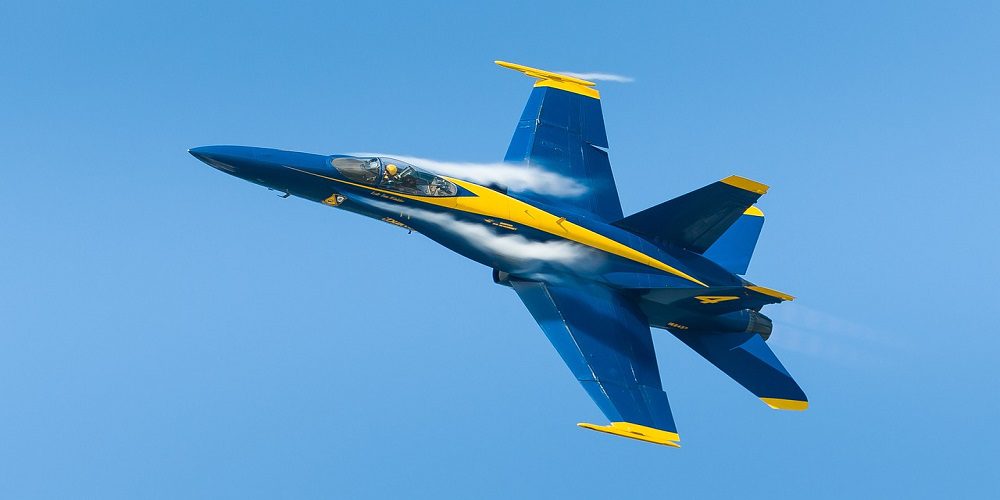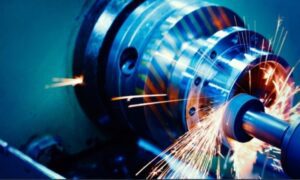Are you ready to soar above the clouds and unravel the mysteries of the aerospace and aeronautical industries? Strap in, because we’re about to take off on an exhilarating journey through these captivating fields. From mind-boggling engineering marvels to groundbreaking innovations that defy gravity, this blog post will be your ultimate guide for unlocking the skies.
Introduction
The aerospace and aeronautical industry is a dynamic and constantly evolving sector that plays a crucial role in shaping the world we live in. From enabling global travel to launching satellites into space, this industry has revolutionized the way we interact with our planet and beyond.
To truly understand the difference between the aerospace and aeronautical industries, it is important to first set the scene by exploring their history, growth, and current state.
Aerospace refers to all activities related to Earth’s atmosphere and outer space. This includes designing, manufacturing, operating, and maintaining aircraft, spacecraft, missiles, rockets, and even satellites. On the other hand, aeronautics focuses specifically on flight within Earth’s atmosphere.
The roots of both of these industries can be traced back to the 18th century, when humans first started experimenting with flight. However, significant advancements were made during World War I when airplanes were used for combat purposes. This led to further developments in aviation technology during World War II.
Defining the Aerospace and Aeronautical Industry
The aerospace and aeronautical industries are often used interchangeably, but they actually represent two distinct sectors within the larger aviation industry. While both industries involve the design, development, production, and maintenance of aircraft and spacecraft, there are key differences that set them apart.
Aerospace Industry:
The aerospace industry is a broad term that encompasses all aspects of aviation and space exploration. It includes the design, manufacturing, testing, operation, and maintenance of aircraft and spacecraft. This industry also includes research and development efforts to improve existing technologies or create new ones for use in aviation or space travel.
One of the main focuses of the aerospace industry is commercial air transportation. This involves the production of passenger planes for airlines and cargo planes for freight companies. These aircraft must meet strict safety regulations set by governing bodies like the Federal Aviation Administration (FAA) in order to ensure safe travel for passengers and goods.
Another important aspect of the aerospace industry is military aviation. This sector involves developing advanced fighter jets, bombers, helicopters, drones, and other military aircraft for defense purposes.
Additionally, the aerospace industry plays a crucial role in space exploration. Companies within this sector work on designing rockets, satellites, probes, and other spacecraft that can be used for various missions, such as weather forecasting or scientific research.
Aeronautical Industry:
While technically falling under the umbrella of aerospace engineering, aeronautical engineering is more specifically focused on designing aircraft that operate within Earth’s atmosphere. This includes airplanes as well as helicopters and gliders.
Historical Background
The aerospace and aeronautical industries have a rich history dating back to ancient times. The earliest forms of human flight can be traced back to 400 BC, when the Chinese invented kites as a form of entertainment. However, it was not until the late 18th century that the foundations for modern aviation were laid.
In 1783, brothers Joseph-Michel and Jacques-Étienne Montgolfier made the first successful hot-air balloon flight in France. This sparked a new interest in exploring the skies, leading to further innovations in aircraft design and technology.
During the 19th century, pioneers such as Sir George Cayley and Otto Lilienthal made significant contributions to aviation by developing gliders and conducting numerous experiments with different wing designs. Their efforts paved the way for the Wright Brothers’ historic flight in Kitty Hawk, North Carolina, on December 17, 1903, marking the birth of modern aviation.
Following this groundbreaking achievement, there was a surge in enthusiasm for flying machines worldwide. Governments began investing heavily in the research and development of aircraft for military purposes during World War I. This led to rapid advancements in aerodynamics, propulsion systems, materials, and other critical aspects of aircraft design.
Key Differences Between Aerospace and the Aeronautical Industry
The aerospace and aeronautical industries are often used interchangeably, but they actually refer to different sectors within the aviation field. While both industries involve the study, design, and production of aircraft and spacecraft, there are some key differences that set them apart. In this section, we will explore these differences in more detail to help you understand the nuances between these two important industries.
1. Scope of Work:
One of the main differences between the aerospace and aeronautical industries is their scope of work. The aerospace industry encompasses all aspects related to flight within and beyond Earth’s atmosphere, including both manned and unmanned operations. This includes designing, manufacturing, testing, and operating aircraft for space exploration as well as commercial air travel. On the other hand, the aeronautical industry focuses specifically on designing and producing aircraft for use within Earth’s atmosphere.
2. Technological Advances:
Another significant difference between these two industries is their technological focus. Aerospace companies tend to be at the forefront of technological innovation due to their involvement in space exploration missions such as building satellites or sending humans to Mars. They also heavily invest in advanced technologies like AI (artificial intelligence), robotics, advanced materials, etc., which have wider applications beyond just aviation.
In contrast, aeronautical companies primarily focus on developing technology for traditional aircraft used for commercial or military purposes. While they do incorporate new technologies into their designs over time, they may not be as cutting-edge as those utilized by aerospace companies.
3. Regulatory Framework:
The aerospace and aeronautical industries are subject to different regulatory frameworks. The aerospace industry is governed by both national and international laws, regulations, and standards set by organizations like the Federal Aviation Administration (FAA), the International Civil Aviation Organization (ICAO), and the National Aeronautics and Space Administration (NASA). This is because aerospace companies operate in both the air and space, which requires strict adherence to safety protocols.
On the other hand, the aeronautical industry mainly follows national regulations set by agencies like the FAA. These regulations focus primarily on safety measures for commercial flights within Earth’s atmosphere.
4. Applications:
The applications of aircraft technology also differ between these two industries. Aerospace companies use their advanced aircraft designs for various purposes, such as military defense systems, weather forecasting, telecommunications, transportation of goods and people, and space exploration. Aeronautical companies primarily focus on designing aircraft for commercial or military use within Earth’s atmosphere.
5. Production Cost:
The production cost for aerospace vehicles tends to be much higher compared to aeronautical vehicles. This is due to the advanced technologies used in manufacturing spaceships or satellites, as well as the rigorous testing required for spaceflight.
In contrast, aeronautical vehicles have lower production costs since they do not require the same level of advanced technology or testing as aerospace vehicles.
6. Employment Opportunities:
The aerospace industry offers a wider range of job opportunities compared to the aeronautical industry. Aerospace companies need professionals from various disciplines, such as engineers, scientists, astronauts, pilots, and technicians, to design and operate spacecraft and satellites. In contrast, the aeronautical industry requires mainly engineers and technicians to design and manufacture aircraft for commercial or military use.
7. Future Growth Prospects:
Both industries have significant growth potential in the future, but their trajectories may differ. The aerospace industry is expected to grow at a faster rate due to increasing demand for space exploration and satellite technology. On the other hand, the growth of the aeronautical industry may be impacted by factors like environmental concerns and competition from alternative modes of transportation.
Similarities between the Aerospace and Aeronautical Industry
The aerospace and aeronautical industries are often confused with each other due to their close relationship in the field of aviation. While both industries deal with the design, development, and manufacturing of aircraft and spacecraft, there are some key similarities that set them apart from other sectors.
1. Technological Advancements: One of the most significant similarities between the aerospace and aeronautical industries is their constant drive towards technological advancements. Both industries heavily rely on cutting-edge technology to improve aircraft performance, safety, and efficiency. This includes advancements in propulsion systems, avionics, materials science, and aerodynamics.
2. Regulatory Standards: The aerospace and aeronautical industries operate under strict regulatory standards set by governing bodies such as the Federal Aviation Administration (FAA) in the United States or the European Union Aviation Safety Agency (EASA). These regulations ensure that all aircraft meet safety requirements for operations in national and international airspace. The rigorous certification process for new aircraft designs is one of the essential aspects shared by both industries.
3. Highly Skilled Workforce: Another similarity between these two industries is their need for a highly skilled workforce. From engineers to pilots to technicians, those working in both fields require extensive training and education to perform their jobs effectively. This workforce must also continually update their skills to keep up with ever-changing technology.
4. Global Market: The global market for aerospace and aeronautical products is highly interconnected, as manufacturers often source parts from different countries worldwide. This means that developments or changes within one industry can have a significant impact on another. For example, a delay in aircraft delivery for an aerospace company can also affect the production schedule for aeronautical companies.
5. Cross-Industry Collaboration: As both industries are closely related, they often collaborate and share technology to improve their products. This cross-industry collaboration allows for faster development and innovation, benefiting both industries.
6. Impact on the Economy: Aerospace and aeronautical industries are vital contributors to the global economy. They create job opportunities, generate revenue through exports, and drive technological advancements that benefit other sectors such as defense, transportation, and communication.
Conclusion
While both the aerospace and aeronautical industries are essential components of the aviation field, they have distinct differences in terms of scope of work, technological advancements, regulatory frameworks, applications, production costs, employment opportunities, and future growth prospects. Understanding these differences can help individuals choose the right career path within the aviation sector based on their interests and skillsets.



































